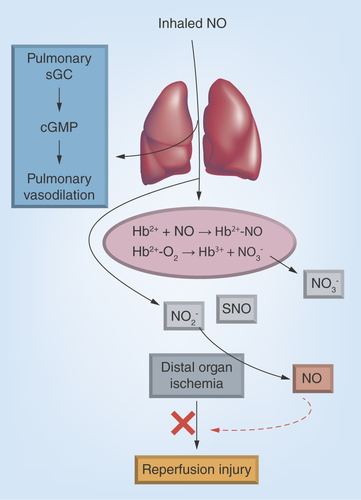Figures & data
Figure 1. Inhaled nitric oxide therapy.
Inhaled nitric oxide (iNO) dilates the pulmonary vasculature by binding to and activating soluble guanylate cyclasae. Any iNO that enters the circulation rapidly reacts with erythrocytic oxyhemoglobin or deoxyhemoglobin forming nitrate and nitrosylhemoglobin, respectively. However, also produced is nitrite and in experimental models, S-nitrosothiols also, but the mechanisms of iNO oxidation to these remains unclear. Nitrite circulates and is reduced back to NO in ischemic tissues by oxygen-sensitive mechanisms, which protects against inflammatory injury. In this paradigm, nitrite-dependent NO formation is targeted to the extrapulmonary tissues under stress.

